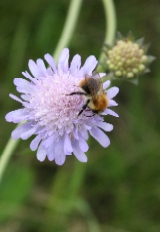| Contact & About Us | ||
| Delivery, T&Cs |
|
Plug Plants |
Plant Collections | Seed Packets | Seed Collections | Meadow Mixtures | Wild Grasses | Info & Advice | Pond Plants |

|
Field Scabious Other
Names:
Lady's Pincushions, Pins & Needles, Bachelor's Buttons Sowing Instructions for Seeds: All year round, but March to early May or August to September give best results. Sow seeds in a good quality multi-purpose compost either in a greenhouse, cold frame or outside. Germination can take from 10 days to 3 months depending on temperature. The seed germinates in spring in the wild. When large enough to handle, prick out the seedlings into individual pots. Plant out into final position from late spring onwards. Planting in autumn will produce slightly earlier flowering than a spring sowing. Our plants and seeds are of native British origin. |